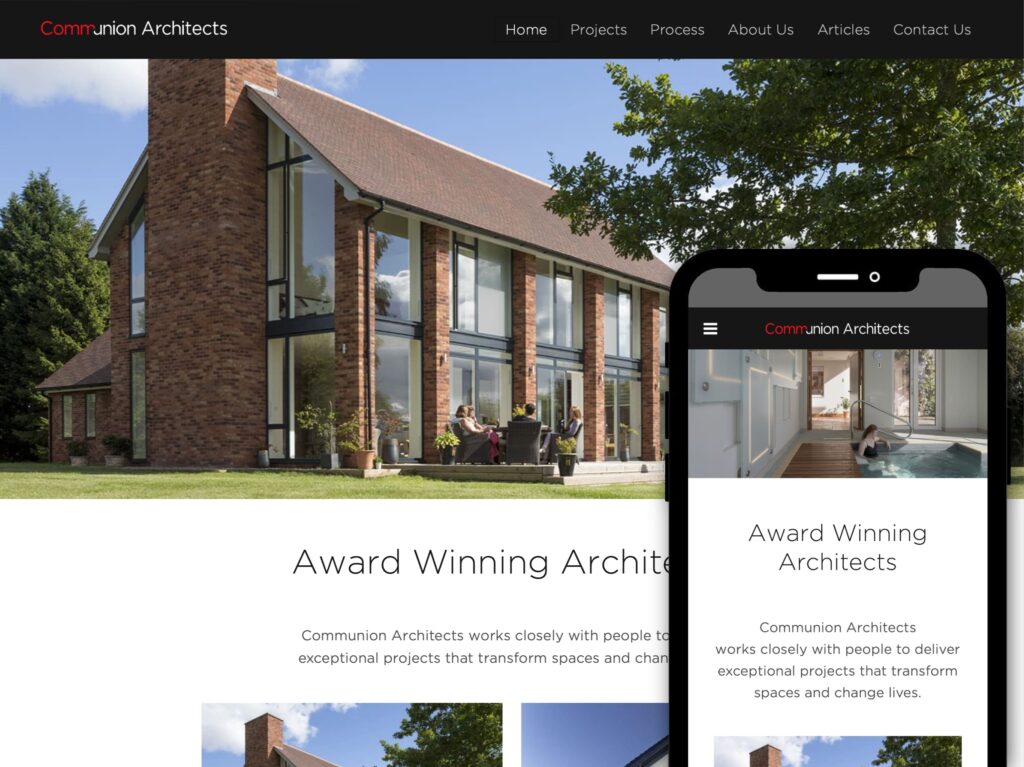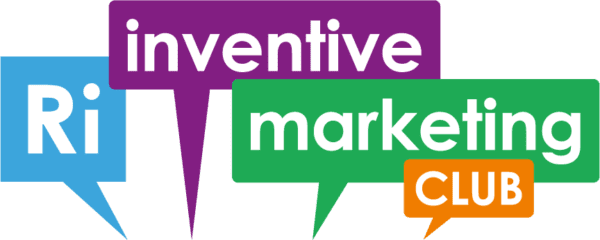When Alex Coppock from Communion Architects first approached us in 2012, he was keen to explore ways to improve search engine rankings and bring more visitors to his website. Since then, his website has remained in top two organic keyword positions and website traffic has grown 10x.
Alex has always taken a very thoughtful approach to his website and I invited him to write an article reflecting on his journey with his website. What follows are his thoughts on how he has changed the way projects are featured on his website over the years from a simple way to showcase the buildings Communion has worked on to something that has a much wider purpose. To my mind, the shift beautifully reflects Communion’s generous, people-focused spirit and its mission statement – working closely with people to deliver exceptional projects that transform spaces and change lives.
I’ll let Alex tell the story from here…
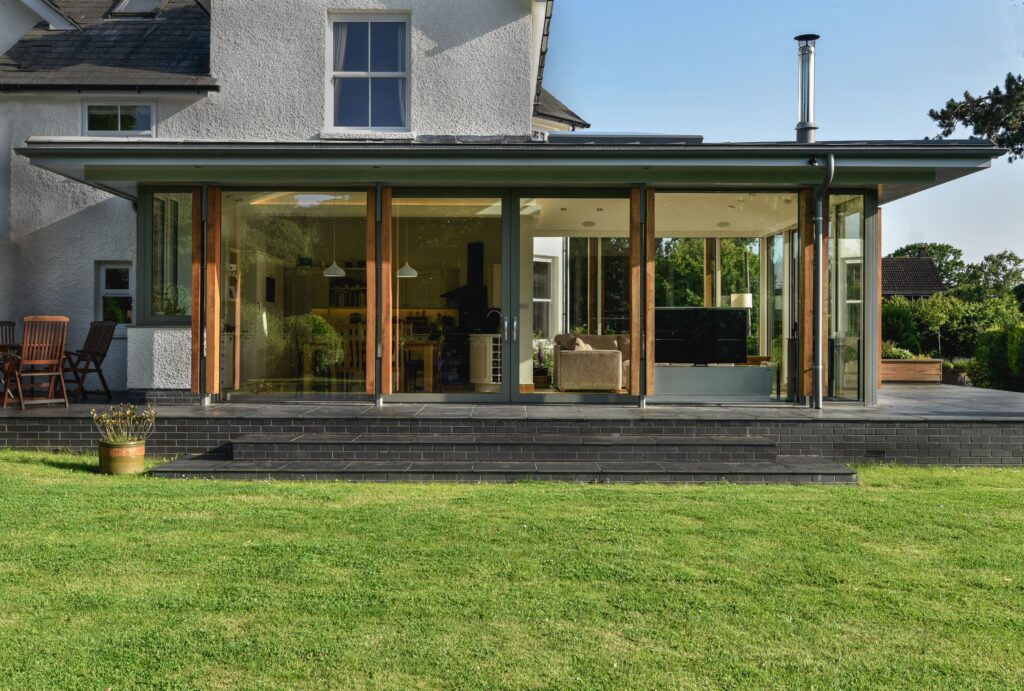
The story of the way we feature projects on our website is the story of an evolution in our thinking.
When we first put together our website, we knew we needed to have a section that featured the projects we had worked on. The first iteration of this section featured professional photos of each project, together with some text commentary that told the story of the project and explained our design thinking.
After a little while, we realised that the project commentaries could be improved with a quote from the client about the project. So this is what we started to do.
Our next realisation was that the quotes from the clients were the best bits about the stories. After all, our input as architects is really as a means to an end – creating a space that transforms our clients’ lives.
We therefore started to invest in professional photos of the project and a professional interview with the clients once our work had completed. We started to feature many more quotes from our clients in our project stories and to focus on what drove them to undertake a building project. At the same, we changed the name of the section on our website from ‘Our Portfolio’ to ‘Client Projects’ to reflect this change of focus.
An opportunity to reflect
The next lightbulb moment was that we could use the interview as an opportunity to reflect on our professional practice. The interview evolved to being one that asked for the good, the bad and the ugly of our service so we knew what we were doing well and – more importantly – where we could improve.
Asking for this feedback was revelatory. We realised that many of the things we take for granted on a project were the things our clients found most difficult. In essence, a real life architecture project takes much longer and is much more stressful than you see when you watch an hour long TV programme. At the same time, the results are even more rewarding than you’d imagine.
Preparing clients for the journey of a project
There is no way for us to change the fact that an architecture project is always an emotional and physical rollercoaster. But what we can do is manage expectations so clients are better prepared for the difficulties of the journey ahead – and show them that the results are worth it.
We started to be more candid in our project stories – the quotes from our clients open up some of the realities of working on a building project as well as share more of their delight at the end result. We also developed guides that talk people through our process in detail and explore the material choices they can make on their building.
All these elements aim to show prospective clients how we help them fulfil their vision without sugar-coating the realities of what is involved in getting there. What we have found is that this honesty is paying off in our conversion rates, because the people who are genuinely interested in working with an architect appreciate our transparency.
Coffee table books
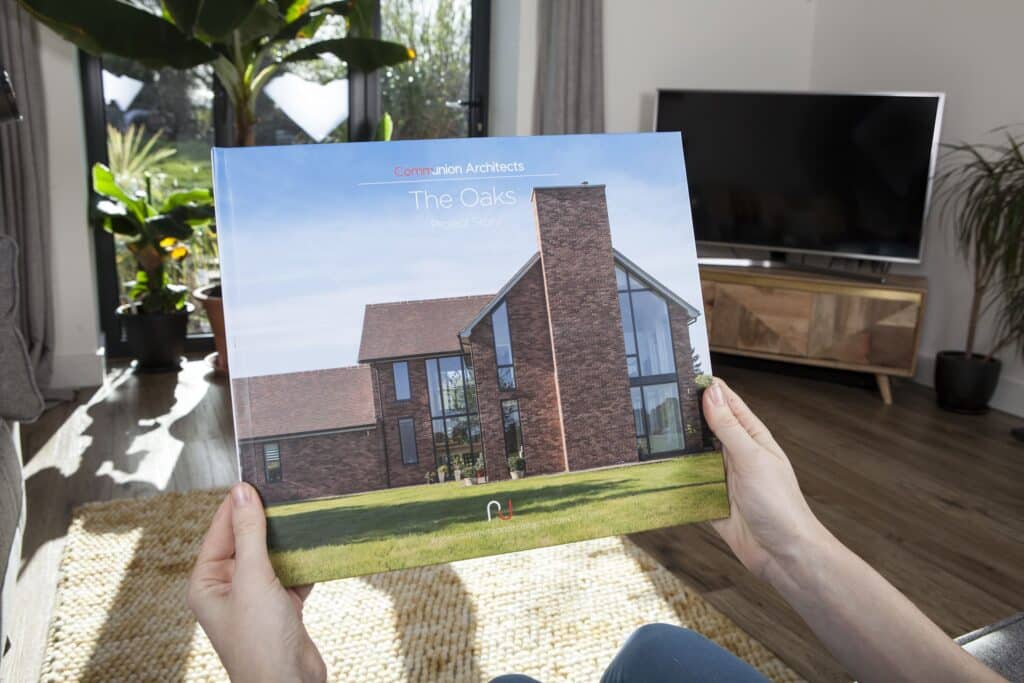
We have recently been able to fulfil a long term goal of creating a ‘coffee table’ book for each project, which we give to our clients to mark the end of our involvement in their build and to thank them for choosing to work with us. The book features the project story and the photos of the completed build, together with the design drawings, images of 3d models and photos from the build as it progressed. The book is a memento and celebrates what has inevitably been a significant journey in our clients’ lives – and, indeed, our own.
Our clients receive a physical copy of the book. We use virtual copies to share with prospective clients to explain more about projects that are relevant to the one they are thinking about doing themselves.
Podcasts take insights to the next level
We knew that the insight from our clients was helping prepare prospective clients for the journey of their own project. But we also knew we had more information we could share from the interviews than just the extracts that featured in the project stories.
We have therefore started to produce podcasts on each project. They share much more of each clients’ thoughts on their experiences and give advice to prospective clients. They are also an opportunity for us to talk in more detail about what a project involved.
They focus on what – for us – is the real joy of a project. I became an architect because I wanted to build things. There is a lot of planning and preparation involved in bringing a project to site, but it’s on site where the real excitement begins and an idea starts to take shape in the landscape.
Emphasising the on site adventure
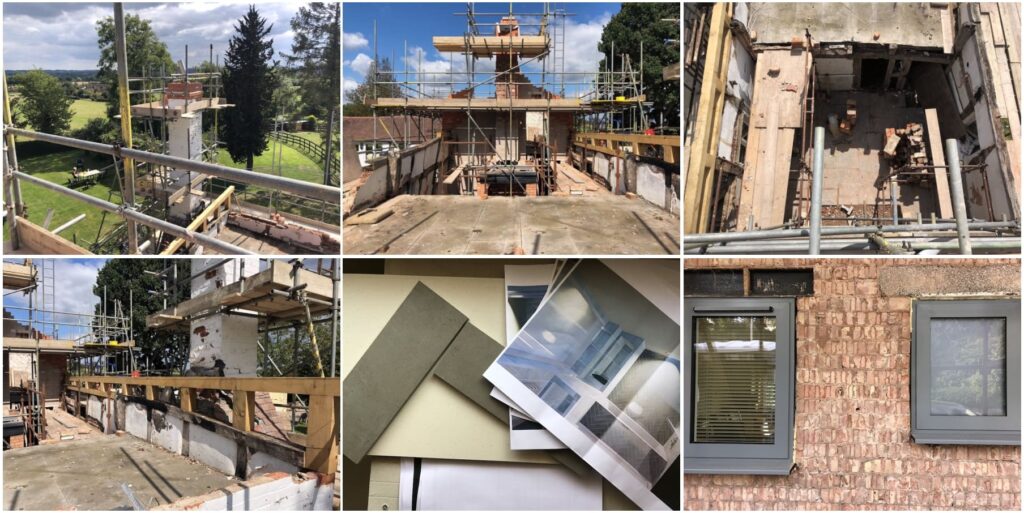
We are now reflecting the excitement of the on-site adventure on social media, by posting photos of our site visits so people can see how a project evolves and what’s involved. These photos feature on our website too, to improve SEO and instil confidence in prospective clients that we can be by their side from start to finish if they choose.
In fact, these photos simply repurpose what we already do. We inspect all of our clients’ sites every two weeks and part of our work is to take photos for our records. Now, as well as being for our records, they are being used to open up the construction process to our audience too.
We have extended the principle of opening up the way we work by adding 3D animations to our YouTube channel. We use the animations to give form to ideas before we invest in them on site but they are also a useful way to show prospective clients how we develop our ideas for each project. Of course, having a YouTube channel is also a good way to strengthen a website’s SEO.
Our website as a record of our life’s work
Our website is first and foremost a means to attract clients. But it is also our voice. When we neglect it, we start to feel as if we no longer have a voice.
It is easy to over-blow what we do. But it is also very easy to underplay it.
The projects we work on with our clients are what we spend our professional lives on. They transform our clients’ lives but they also transform our own. By building a repository of projects and related information we are helping people – whether they choose to work with us or not – with ideas for their own projects. We are also creating a bank of information for ourselves that we can use to reflect and look back on what we are spending our lives doing.
An architecture project reflects the results of the conversation between client and architect. Our ideas combine and then take shape in the world. We like to think our website is a conversation too – and that it’s a conversation worth having.
If you’d like to contact Alex directly or find out more about his process, I recommend you head over to his rather super website.

